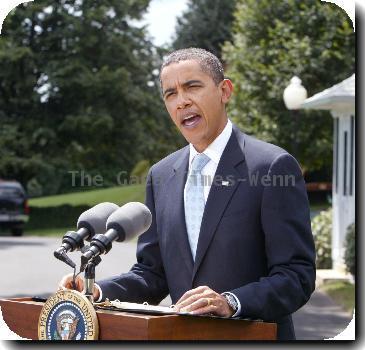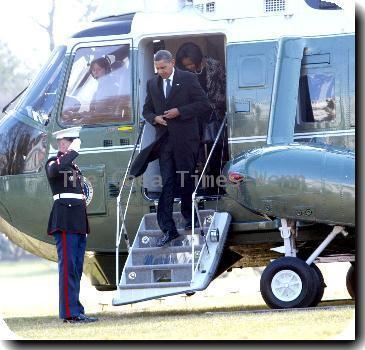Finally, progress on both sides of Afghan-Pakistan border gives glimmer of hope for US in war
By Robert H. Reid, APMonday, February 22, 2010
Finally, a glimmer of hope for US in Afghan war
KABUL — The arrests of key Taliban leaders in Pakistan and slow but steady progress on the battlefield of Helmand province have offered the first flicker of hope in years that the U.S. and its allies may be able to check the rise of an insurgency that seemed unstoppable only a few months ago.
That’s a long way from victory — a word that has fallen out of favor within a U.S. military keenly aware of the complexity of Afghanistan and the dangers of elevated expectations among a war-weary public in the United States and Europe.
However, the events of the last few weeks suggest that failure isn’t inevitable either.
For the first time in four years, the Taliban and their allies are on the defensive. Key leaders are in Pakistani custody, insurgents on the verge of losing their supply and logistical base in the Helmand town of Marjah and they face an expected showdown in the months ahead around their spiritual birthplace of Kandahar.
“The situation remains serious but is no longer deteriorating,” Defense Secretary Robert Gates told reporters at the Pentagon on Monday.
If all goes well, pressure will mount on the Taliban and their allies to consider a negotiated settlement — which the top NATO commander Gen. Stanley McChrystal and others believe is the only way to end the conflict.
The process won’t be quick. The Taliban have shown great resiliency, rebounding from more serious setbacks including the loss of power in the U.S.-led invasion of 2001.
Civilian casualties, such as the 21 people said to have been killed Sunday in a misguided NATO airstrike, still fuel bitterness among Afghans despite the alliance’s efforts to curb its own firepower. Continuing deaths at the hands of foreign soldiers build resentment among Afghans — even though the U.N. says the Taliban are responsible for the majority of civilian casualties.
Gen. David Petreaus, who oversees the wars in Afghanistan and Iraq, said last weekend that the ongoing offensive in Helmand province is only the beginning of a campaign expected last up to 18 months — testing the mettle of an U.S. military strained by nearly nine years of war and the patience of an American public facing their own severe economic and political challenges.
Success is by no means assured — even if recent developments favor the allies. Afghanistan’s government remains weak, its army and police years away from functioning effectively on their own.
Battered or not, the Taliban have proven nimble in the past. They have expanded into the north, stretching NATO forces and attacking supply lines coming south from the former Soviet republics of Central Asia. Over the last six months, they have struck in the heart of Kabul, a capital that has remained far more secure than Baghdad.
If the Taliban lose their bases in Helmand, they could regroup to the north in Uruzgan province, especially if the Dutch pull out their forces from that area this year as expected and no other country rushes in forces to fill the breach.
Nevertheless, the offensive around Marjah could prove to be a game changer if NATO can exploit its gains, establish a reasonably effective local Afghan administration and convince the people there that the allies have no intention of ceding vast areas of the country to the militants.
Once the area around Marjah is secured — a process that could still take weeks — NATO and its Afghan partners plan to shift eastward to a far bigger challenge — Kandahar, the second largest city in the country and the economic and cultural capital of the south.
The city was the Taliban’s headquarters until the city fell to U.S.-led forces in 2001. But with only 1,000 Canadian troops to protect the city and the surrounding area, the insurgents have managed to make significant inroads, controlling villages to the north and west of Kandahar and expanding their influence into numerous neighborhoods in the urban center itself.
To reverse the trend, NATO is boosting its presence in the Kandahar area to 6,000 troops in the coming months — many of them Americans ordered to Afghanistan as part of President Barack Obama’s troop surge. Thousands more are expected to join in an offensive widely expected this summer.
If the Kandahar area can be secured, NATO hopes to establish an arc of stability extending from Helmand in the southwest all the way to Kabul in the northeast.
That would enable the Afghan government to expand its influence in parts of the country which have been the most estranged and — if all goes to plan — convince many Afghans that their future lies with the government and not the insurgents.
Bolstering the capacity and efficiency of Afghan local government remains the key.
“Stabilizing Afghanistan requires an approach that looks beyond just the provision of physical security and the reform of military and police forces to one that enables local communities and the government to resolve local conflicts,” the private United States Institute of Peace said in a report this month.
That’s a tall order in a country so poor that local administrators earn little and have even fewer resources to spend. Villagers say one of the attractions of the Taliban was their ability to resolve local disputes and maintain law and order — without the bribes and delays that plague the Afghan administration.
“Even if the coalition achieves limited tactical successes, the Taliban will quickly replace the fighters it loses, and it can easily target the ‘traitors,’” Gilles Dorronsoro, an Afghan expert with the Carnegie Endowment for International Peace, wrote this month. “These coalition tactics are not new and have never worked before.”
Still, the new campaign may already be producing results by making the leadership in Pakistan reconsider its long-standing ties with the Taliban, whose leaders found refuge on Pakistani soil when they were ousted from power. Pakistan maintained those ties even after 2001 as leverage in case the Taliban ever regained a measure of power.
In recent weeks, however, several key Taliban leaders have been picked up in Pakistan, including Mullah Abdul Ghani Baradar, the movement’s No. 2 figure detained in Karachi. Although Pakistan’s motives are unclear, it appears the government is rethinking its strategy, pondering whether the relationship with the Taliban has outlived its usefulness.
Analyst Charles Kupchan of the Council on Foreign Relations wrote that progress in setting back the Taliban “may well convince Pakistan that the Afghan Taliban will not be making a significant comeback.”
“Accordingly, Islamabad might no longer see any reason to indulge the Taliban, and could instead seek to shut them down,” he wrote.
Robert H. Reid is AP chief of bureau in Kabul and news director for Afghanistan and Pakistan.
Tags: Afghanistan, Asia, Barack Obama, Central Asia, Geography, Kabul, Kandahar, North America, Pakistan, South Asia, United States


